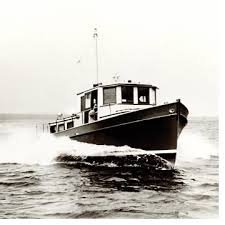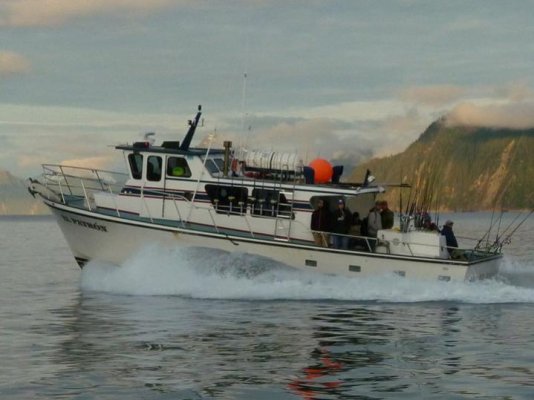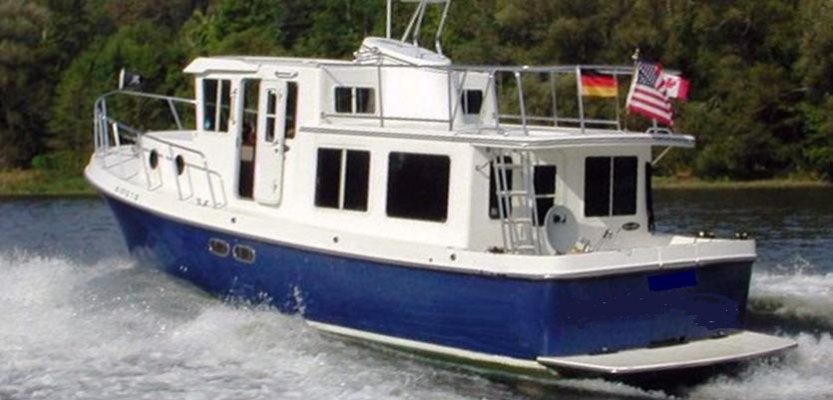An unasked question that just occurred to me is. "Why not just push the throttle from 1700 to 1800 and accomplish the same thing with the 'correct' prop instead of overpropping the boat?"
It's a valid question, I think, and one answer may lie in the nature of us humans.
We have two FL120s under the floor in our PNW cruiser. And guess what happens if I push the power from our usual 1650 crusing rpm up to 1750 or 1800 rpm? With these old-technology engines, it starts getting real noisy in the cabin.
Now if one wades through Grand Banks promo literature from the 1960s and 70s, you will see occasional references to cruising in a "quiet" boat. By overpropping a bit and giving the owner a knot or so more speed at the same rpm, the engine doesn't have to be spun up another 1,000 or whatever rpm to get that same knot, and things stay quieter inside.
Now, being able to offer a slightly less noisy boat at cruise is not a reason to overprop a boat. But American Marine saw (or rather heard) the difference between gaining a bit more speed by keeping the engine(s) at a lower rpm with a coarser prop and running the engine(s) faster to get the same speed, and being the smart marketers they were at the time, didn't hesitate to promote a quiet(er) boat.
No, they did not in their literature relate the noise level in the cabin to the props they used. They didn't even relate it to a lower engine rpm in cruise. They simply promoted their boat as being "quiet."
A small thing, sure. But when your new-boat market is (at that time) fairly wealthy, discriminating boat buyers, every little bit helps.
I am by no means trying to justify the use of overpropping willy-nilly in everything. I'm silmply offering up what Grand Banks did as a way of illustrating the fact that overpropping can be advantageous in some situations. There are, I'm sure, just as many if not more situations when it's not.
But I don't think one can make a blanket statement that overpropping is always bad or stupid OR always good or sensible. Like almost all boating questions from anchors to zincs, the right answer is..... it depends.
It's a valid question, I think, and one answer may lie in the nature of us humans.
We have two FL120s under the floor in our PNW cruiser. And guess what happens if I push the power from our usual 1650 crusing rpm up to 1750 or 1800 rpm? With these old-technology engines, it starts getting real noisy in the cabin.
Now if one wades through Grand Banks promo literature from the 1960s and 70s, you will see occasional references to cruising in a "quiet" boat. By overpropping a bit and giving the owner a knot or so more speed at the same rpm, the engine doesn't have to be spun up another 1,000 or whatever rpm to get that same knot, and things stay quieter inside.
Now, being able to offer a slightly less noisy boat at cruise is not a reason to overprop a boat. But American Marine saw (or rather heard) the difference between gaining a bit more speed by keeping the engine(s) at a lower rpm with a coarser prop and running the engine(s) faster to get the same speed, and being the smart marketers they were at the time, didn't hesitate to promote a quiet(er) boat.
No, they did not in their literature relate the noise level in the cabin to the props they used. They didn't even relate it to a lower engine rpm in cruise. They simply promoted their boat as being "quiet."
A small thing, sure. But when your new-boat market is (at that time) fairly wealthy, discriminating boat buyers, every little bit helps.
I am by no means trying to justify the use of overpropping willy-nilly in everything. I'm silmply offering up what Grand Banks did as a way of illustrating the fact that overpropping can be advantageous in some situations. There are, I'm sure, just as many if not more situations when it's not.
But I don't think one can make a blanket statement that overpropping is always bad or stupid OR always good or sensible. Like almost all boating questions from anchors to zincs, the right answer is..... it depends.
Last edited:




